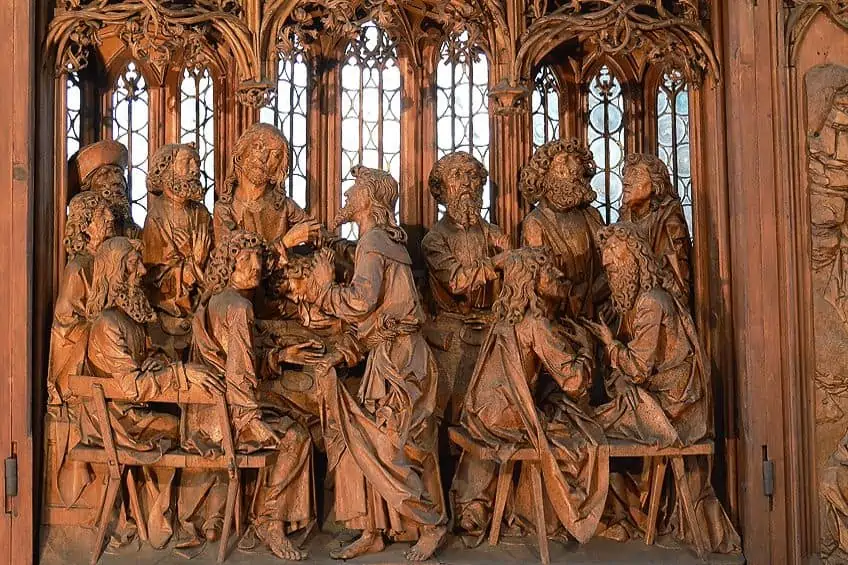Wood Carving Art – A Look at the Intricate Art of Carving Wood
Crafting things from wood is a practice that’s been around pretty much as long as people have existed. Whether we were making toys for our children, weapons for hunting, or bows to eat out of, wood has always been a material that we could rely on to fulfill our crafting needs. There are hundreds (if not thousands) of things you could make from wood, and in most instances, all you need to get started is a knife and some malleable wood. This being said, let’s have a look at what exactly wood carving is, what can be created through the art of wood carving, some famous artists in the medium, and some facts that you should know about this rather niche woodcraft.
What Is Wood Carving Art?
What is wood carving art? Wood carving art can be characterized as the act of creating forms from solid wood using wood carving tools, which are primarily a hammer and chisels. Wood crafting art is sort of a blanket term that can be used to refer to actual sculptures and installations, or simply things that have been carved from solid wood that one could perceive as artwork.
This might seem a bit confusing, so in the interest of simplicity, you could simply think of wood carving art as anything that has been carved using traditional wood carving techniques and or/tools, and that which you perceive as art.
This can be pretty much anything, from bowls to tools, to masks, and even little figurines! The art of carving involves the use of a hammer (or mallet) which is used to drive a chisel into solid wood. The wood block is shaved and shaped until the desired form has been created, at which point the final workpiece can be stained and sealed to preserve it.
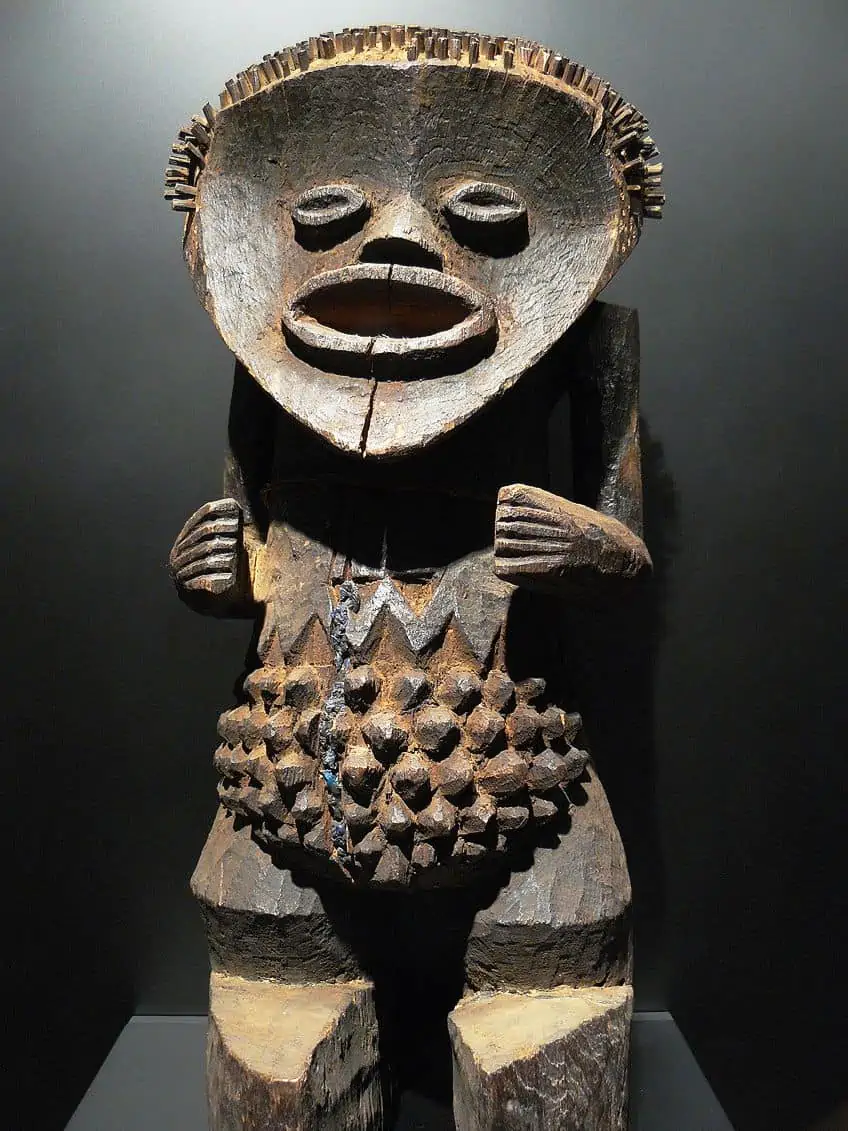
There is a lot of technique and patience involved in the wood carving process, which can take years to master. The art of carving wood has been practiced all over the world by virtually every culture and religion out there. Whether it be religious iconography, tools, busts, utensils, or the integration of wood into existing workpieces, it’s been done hundreds of times by multiple groups of people.
Why use wood as a medium of choice though? After all, stone, soft metals, and even materials that functioned as paper existed at the time. Well, metallurgy and masonry skills took time and resources to develop, and not everyone had the skill or inclination to use ink on parchment.
Wood was an abundant resource and getting your hands on a knife or hammer and chisel wasn’t too hard, especially since they were used in everyday activities.
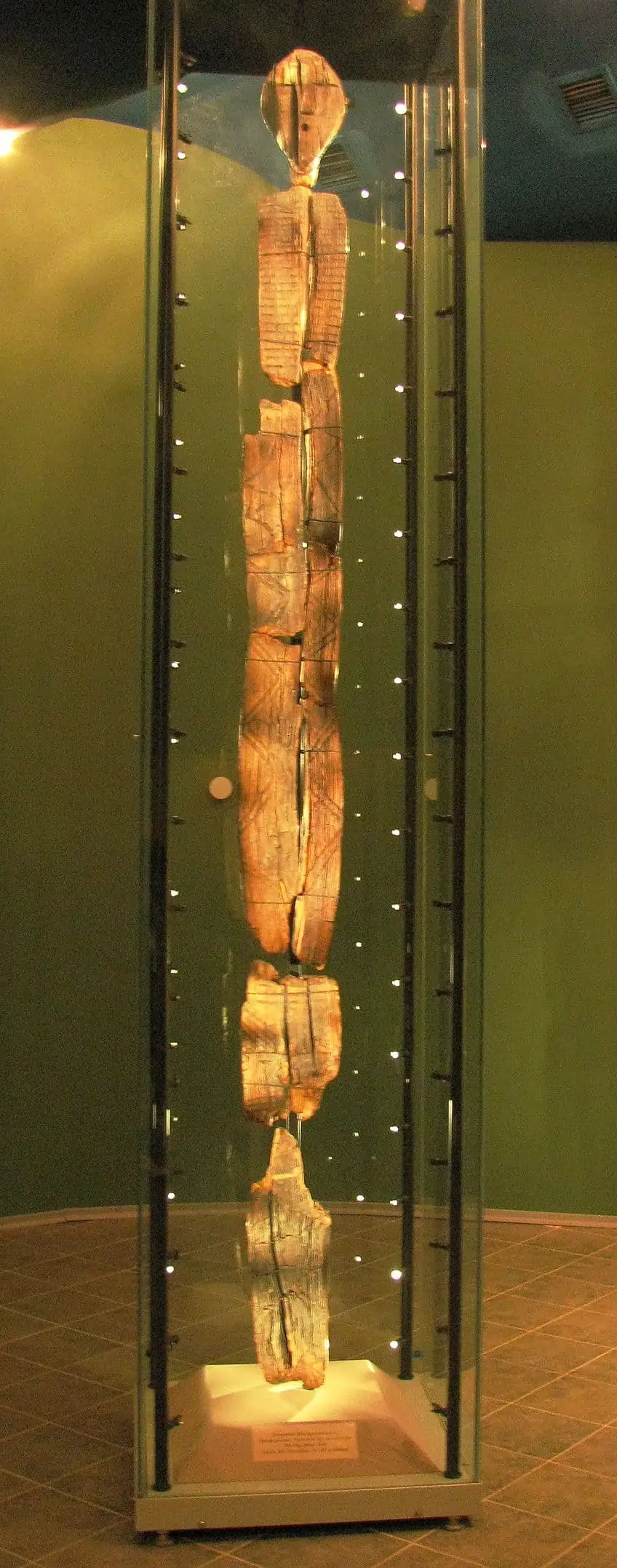
This being said, our ancestors spent a lot of time outdoors, and so did their workpieces. This meant that their wooden crafts were often exposed to elements and degraded over time. Funny enough, even with modern preservatives and surface coatings like wood stain and epoxy resin, this is still an issue that loads of crafters all over the world face today. As a result, many culturally significant wooden crafts have been damaged over the years, some beyond the point of recognition.
Fortunately, not all of them were damaged to this degree, and you’ll be able to view absolutely stunning wood carving workpieces from various cultures and regions at museums all over the world!
How Did Wood Carving Evolve?
As we mentioned previously, wood crafting has been around for a long time, whether it’s been used as a standalone medium or in conjunction with other art mediums. As a result, wood crafting has evolved in tandem with the majority of other art mediums such as painting, stone sculpting, and even sketching!
Subject Matter
As with many art forms, technology developed over time, and so did the style and application of the art form, resulting in a wide variety of subject matter(s) and styles to choose from. At certain points in both western and global history, art took on religious iconography, most of which was influenced by biblical subject matter, and wood crafting was no exception to this trend.
As time went on and society moved away from cultural and artistic development towards industrial development, so did wood carving art.

Art of the time became less about capturing forms and scenarios, instead focusing on evoking a feeling or compelling the viewer emotionally instead. As a result, wood carving art moved toward more abstract subject matters, once again changing the trajectory of the art form.
Wood Treatment
It wasn’t only the form and style of woodcraft workpieces that changed throughout this time either, the way that crafters treated and coated their workpieces changed as more and more substances were discovered for these applications.
Things like wood stains and various paints fell in and out of fashion as time went on, some even favoring the natural look of exposed wood grain above coatings.
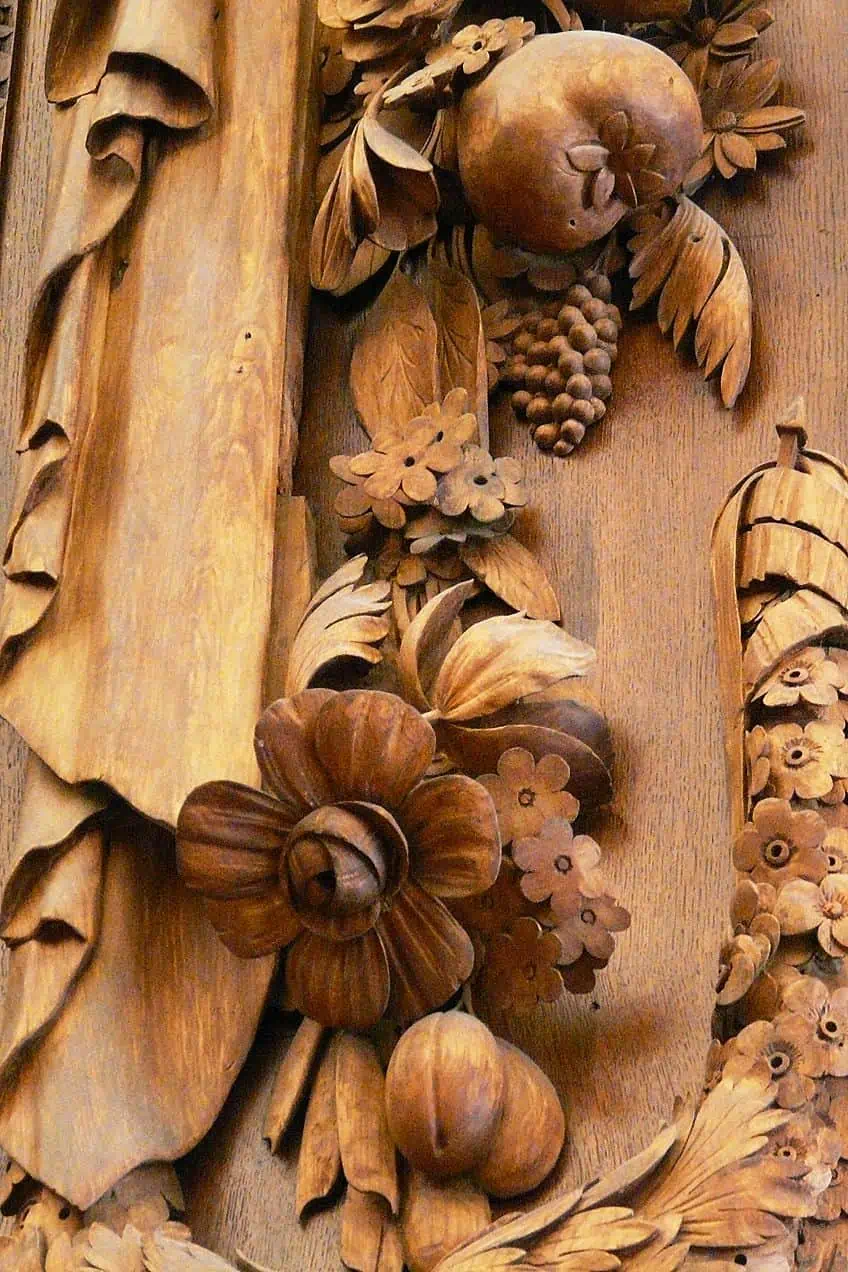
Wood offered crafters an accessible medium with which to create three-dimensional impressions, loads of which line the halls of large cathedrals and museums around the world. These days wood crafting is still popular, and there are loads of professional wood crafting artists and artists in general who create amazing pieces using both wood carving as a medium and the techniques associated with it.
Cultural Sensitivity and Awareness
These days the use of wood in the creation of culturally specific art, as well as the techniques and aesthetics associated with said cultures are largely respected, and the teaching and practice of these techniques are considered to be sacred in some circles.
As you can see, wood carving is a somewhat pinnacle element of global cultural history, and continues to be a popular art medium word wide.
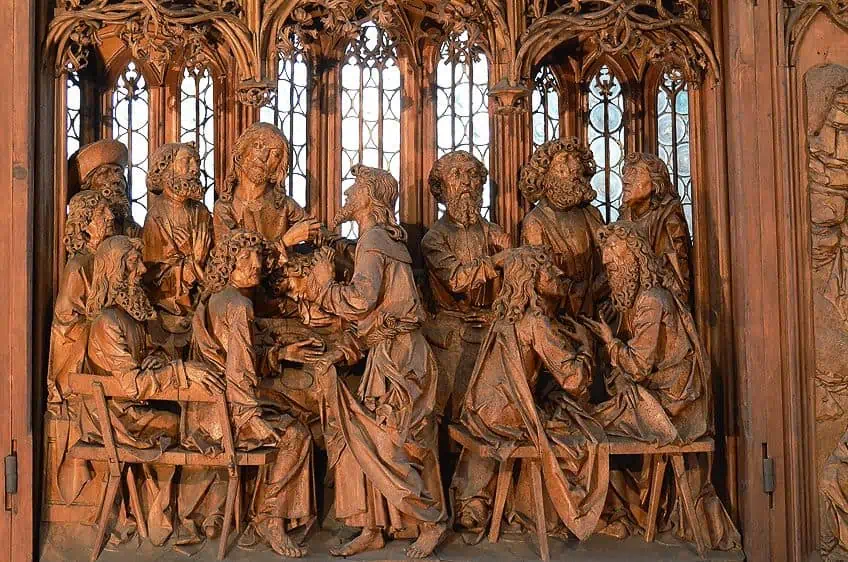
Wood Carving Artists and Their Works
As with any art medium, some artists excel in both creativity and representation. Wood carving is no exception to this rule, many artists all over the world have honed their skills to a point where the beauty and impact of their work are undeniable. To make things a bit easier for you, we have listed some of the best artists in the wood carving craft and some of the more notable workpieces.
| Wood Carving Artist | Name of Artwork |
| Deng Daohang (1938 – Present) | Female Face in Log (20th/21st century) |
| Rumerio Giuseppe (1947 – Present) | Animals in Their Natural State (20th/21st century) |
| Damiano Taurino (1949 – Present) | Al Cerchio (2018) |
| Earl Martz (1952 – Present) | Earl Martz (1952 – Present) |
| Paul Kaptein (1970 – Present) | And in the Endless Sounds There Came a Pause (2014) |
| Aron Demetez (1970 – Present) | Bozzetto (2018) |
| Yoshitoshi Kanemaki (1972 – Present) | Caprice Figurative (2 As A Set) (2020) |
Below, we have some more detailed information about each artist, their nationality, where they currently reside, as well as some of the popular art movements they have been involved in. Wood carving is a pretty niche art form, so all of these artists are who many consider the cream of the crop in this art discipline.
Deng Daohang (1938 – Present)
| Artist | Deng Daohang |
| When the Artist Lived | 1938 – Present |
| Nationality | Chinese |
| Where the Artist Lived | Hubei |
| Associated Art Movements | Traditional Chinese wood carving |
While all of the artists we have covered so far use specialized tools to carefully carve out their workpieces, Deng Daohang takes an entirely different approach to the art form. It’s been said many times that she tends to use “archaic” tools such as hatchers and chisels to create her art.
However, regardless of how rudimentary the instruments used are, she creates incredibly detailed and awe-inspiring wood carving examples.
Using a carving knife and what can only be described as an axe, Daohang makes wood carving examples that are virtually indistinguishable from those made with modern wood crafting tools. Her works feature a wide variety of subjects including people and animals, but they all seem to have an underlying style that has become synonymous with Daohang’s traditional carving techniques.
Female Face in Log (20th/21st Century)
One of the most recognizable works by this artist is arguably the face of a smiling woman peering out of the side of a log. This piece possesses an extraordinary amount of detail for the caliber of tools that were used to create it. The woman appears to be smirking at someone (or something) off to the right, with a portion of her hair extruding out the top of the log.
The piece has a rather novel feel to it, as you tend to get the feeling that the woman in the log knows something you don’t.
As always, Daohang’s respect for wood as a material is visible, as the log still has its bark intact even though large portions have been intricately carved into this piece. This is a running theme in all of Daohang’s artwork. The preservation of traditional wood carving methods is a cause rather close to this artist’s heart, as not only is the field currently dominated by male artists, but more and more carvers are moving toward modern carving techniques and tools. This being said, Daohang says she remains confident that traditional techniques and carving styles will not fade away.
Rumerio Giuseppe (1947 – Present)
| Artist | Rumerio Giuseppe |
| When the Artist Lived | 1947 – Present |
| Nationality | Italian |
| Where the Artist Lived | Urtijëi |
| Associated Art Movements | Sculpting, wood carving |
If you’re particularly fond of animal wood carvings, then the work of Mr. Rumerio should pique your interest. With over 30 years of crafting experience, he has done numerous works of varying sizes, compositions, and subject matter.
These works are almost always of expert quality, hand-crafted, and are always accompanied by Rumerio’s seal of authenticity.
Whether it be reliefs of holy figures or detailed representations of wildlife, this artist never fails to deliver jaw-dropping carvings that are sure to turn heads wherever they happen to be displayed. This comes as no surprise that Rumerio carries the title of Master Artist, which is evident in virtually all his works considering their immense beauty (and price!).
Animals in Their Natural State (20th/21st Century)
Strangely, none of Rumerio’s works are named like most other high-end wood carvers tend to do with their more popular workpieces, although there are some wood carvings sculpture pieces of animals in their natural habitat (and often in motion) which seem to be quite popular among critics and fans alike.
Arguably one of the most moving of his workpieces is a depiction of two wolves running through a grassy plain.
This piece’s exquisite contours and painstakingly detailed linework produce an incredible depiction of these wild wolves chasing their prey through an open field with absolute bliss in their eyes. From their matted fur to the tendons on their paws, Rumerio’s wolves feel like a labor of love that anyone would be lucky to own!
Damiano Taurino (1949 – Present)
| Artist | Damiano Taurino |
| When the Artist Lived | 1949 – Present |
| Nationality | Italian |
| Where the Artist Lived | Apulia |
| Associated Art Movements | Wood sculpting/ wood carving |
The second Italian artist to make it on our list is Mr. Damiano Taurino. He hails from Apulia which is often referred to as the ‘boot heel” of Italy due to its shape. Taurino tends to have extremely detailed artwork with a single, consistent subject matter.
Taurino is fascinated with dance, and not only the act of dancing but the dancers themselves.
A wooden sculpture designed by Taurino is often designed to capture a certain moment in a dancer’s routine, which he does pretty well. There is no specific discipline that Taurino leans towards, featuring contemporary, modern, and expressive dancers in his works.
Taurino’s work seems to focus on realism, which comes as no surprise considering that one of his primary influences is Baroque art, which is common in Apulia.
Al Cerchio (2018)
What sets Taurino apart from other wood carving artists is his ability to integrate metal into the composition of his pieces. This combination of expert wood carving and metallurgy is what makes this piece, Al Cerchio, entirely unique and stunning to look at.
This piece features a dancer sitting in a bronze hoop that has been suspended in mid-air.
The details in the dancer’s facial expressions and the texture of their clothes and hair make this wooden sculpture something that you can look at 20 times and still notice something new every single time. A total of nine copies were made of this wood carving sculpture, and they tend to sell for a pretty penny in case you’re thinking of getting one.
Earl Martz (1952 – Present)
| Artist | Earl Martz |
| When the Artist Lived | 1952 – Present |
| Nationality of the Artists | American |
| Where the Artist Lived | Pennsylvania |
| Associated Art Movements | Painting, sketching, wood carving |
Good artists tend to have rather interesting lives, and Earl Martz is no exception. Martz got his start as a mural painter for the US army back in 1970 and slowly developed and expanded his artistic arsenal as time went on.
These days he is a trained taxidermist, painter, and wood carver! Martz is a huge nature lover too, which is evident in the subject matter of his work.
Virtually all his workpieces incorporate the use of both wildlife and fauna, fusing these two aspects of nature into a seamless representation of professional wood carving. Martz claims that has used wood species from all of the continental US in his works, and that it can take months or even years for him to find a piece of wood that speaks to him.
Wildlife Sculptures (20th/21st Century)
The subject of virtually all of Martz’s wood artwork is animals that have been integrated with naturally occurring pieces of wood. The wood Martz chooses generally already possesses the natural shape of the animal’s body or face, which Martz then expertly sculpts into a more detailed depiction of the animal in question.
With every piece, it tends to feel like the wood is naturally producing the animal in question.
Although fashioning the faces of animals isn’t entirely unique when it comes to wood artwork, how it is done by Martz is. From tigers to wolves, to elk, and even bears, each animal and the wood they appear to be protruding out of appear to be in complete visual harmony, which is no small feat considering how challenging this can be when working with wood as a medium.
Paul Kaptein (1970 – Present)
| Artist | Paul Kaptein |
| When the Artist Lived | 1970 – Present |
| Nationality | Australia |
| Where the Artist Lived | Perth |
| Associated Art Movements | Sculpture and drawing |
If you’re into more abstract artwork, then you’ll likely love the work of Paul Kaptein. Hailing from Australia this artist is a self-taught genius who not only makes great wood carving sculpture pieces but thoroughly enjoys the process of wood carving in general.
His passion for the craft and attention are immediately visible throughout each and every one of his pieces.
What makes Kaptein’s work special isn’t the subject matter, but rather the presentation of the conventional and abstract in his work. Both concepts are presented simultaneously, with seemingly ordinary forms being distorted in certain places, which Kaptein claims is meant to represent the disruption of linear time, and one’s sense of continuity.
And in the Endless Sounds There Came a Pause (2014)
This piece is one of the most popular and visually striking of all of Kaptein’s works. It features a wood carving sculpture of a monk chiseled from a specific wood type found in Malaysia called jelutong. This wood species is soft and malleable, which is how Kaptein managed to execute such intricate and well-balanced lines with this piece (not to mention his incredible talent). This piece in particular is interesting because even though the bottom half of the monk appears as one would expect, the torso and head appear to be distorted as if reality itself is bending in these areas.
The shoulders and legs of the carving appear to be unaffected, perfectly illustrating the concept of broken continuity that Kaptein holds so dear.
Aron Demetez (1970 – Present)
| Artist | Aron Demetez |
| When the Artist Lived | 1970 – Present |
| Nationality of the Artists | Italian |
| Where the Artist Lived | Val Gardena |
| Associated Art Movements | Wood carving, wood sculpting |
While he is primarily known for his life-sized wood sculptures Aron Demetez is actually a pretty talented multimedia artist. He has made several exceedingly impressive works of art out of wood, bronze, and even resin!
His works tend to have loads of visual impact and feature the human form more often than not.
Demetez tends to stick to traditional wood carving techniques in his pursuit of expression, and they seem to be working quite well. The subject matter of his work seems to be the relationship between man and nature, and the relationships we have with ourselves.
The is often loads of visual tension and juxtaposition of elements throughout his artwork, mostly as a result of traditional wood carving techniques.
Bozzetto (2018)
Like all of Demetez’s workpieces, this can be a bit hard to look at. Featuring a human figure perched up on a large tree stump, this piece looks like a wooden person that has been put through the wringer, even though their facial expression and body language indicate a degree of serenity and self-control.
As we mentioned previously, contrast is a running theme throughout Demetez’s work.
While some of his work tends to produce an unexpected emotional response in the viewer, they also resemble something that one might come across in an ancient forest, left there by civilizations long past. The fine details of these works tend to induce increasingly complex emotions the closer one gets to them, which is quite interesting, to say the least.
Yoshitoshi Kanemaki (1972 – Present)
| Artist | Yoshitoshi Kanemaki |
| When the Artist Lived | 1972 – Present |
| Nationality of the Artists | Japanese |
| Where the Artist Lived | Chiba Prefecture |
| Associated Art Movements | Wood sculpting, Surrealism, sketching |
We feel like it’s pretty safe to say that everyone, at some point in their lives, feels like they aren’t expressing themselves adequately. After all, feelings are meant to be felt, not explained, and Yoshitoshi Kanemaki understands this.
As a student of the Tama Art University in Chiba Prefecture Japan, Kanemaki graduated from the department of sculpture and began his career.
His works are entirely unique, utilizing modern technology to turn single logs of wood into incredibly detailed works of art. The subject matter of his works is often people, and the complex emotions we’re capable of feeling at any given time.
Kanemaki’s works often look like an optical illusion, featuring faces with multiple facial expressions at once!
Caprice Figurative (2 As A Set) (2020)
A perfect illustration of Kanemaki’s incredible artistic ability is this piece. It’s actually part of a limited edition set that has been bought and sold for thousands of dollars both in galleries and online. It features two women with a wide range of emotions on their faces, each perched up on what appears to be a wooden stool of some kind.
Their contrasting colors make for an interesting change, as it’s easy to see just how easily a difference in color can affect the exact same form.
These pieces are both expertly carved and painted, and are sure to be a conversation started regardless of where they end up. This range of emotion and compulsion to address the little differences in facial expressions and color are staples of Kanemaki workpieces.
Now that you know what wood carving art is, how wood carving has evolved as an art form, some of the artists most associated with the craft, and some of their most famous works, it’s time for you to get out there and put your newfound knowledge to the test. Remember that learning wood carving takes time, patience, and dedication if you’d like to become proficient.
Frequently Asked Questions
What Is Wood Carving?
What is wood carving? Wood carving can be characterized as the practice of using a hammer, chisel, and/or other wood carving tools to create various art forms. Generally speaking, what separates wood carving from wood crafting is the use of manual tools as opposed to powered ones.
Is Wood a Carving Art?
Wood carving is arguably the oldest form of art in the world. Wood carving has been practiced by virtually every culture in every region across the world, and even with the advent of modern technology wood carving is still an extraordinarily popular and respected art form.
What Type of Art Is Carving?
Wood carving is considered to be one of the three primary types of sculpting. Others include modeling and joining, but wood carving is one of the oldest types of sculpting out there aside from the use of stone and clay of course.
Jordan Anthony is a Cape Town-based film photographer, curator, and arts writer. She holds a Bachelor of Art in Fine Arts from the University of the Witwatersrand, Johannesburg, where she explored themes like healing, identity, dreams, and intuitive creation in her Contemporary art practice. Jordan has collaborated with various local art institutions, including the KZNSA Gallery in Durban, the Turbine Art Fair, and the Wits Art Museum. Her photography focuses on abstract color manipulations, portraiture, candid shots, and urban landscapes. She’s intrigued by philosophy, memory, and esotericism, drawing inspiration from Surrealism, Fluxus, and ancient civilizations, as well as childhood influences and found objects. Jordan is working for artfilemagazine since 2022 and writes blog posts about art history and photography.
Learn more about Jordan Anthony and about us.
Cite this Article
Jordan, Anthony, “Wood Carving Art – A Look at the Intricate Art of Carving Wood.” artfilemagazine – Your Online Art Source. December 23, 2022. URL: https://artfilemagazine.com/wood-carving-art/
Anthony, J. (2022, 23 December). Wood Carving Art – A Look at the Intricate Art of Carving Wood. artfilemagazine – Your Online Art Source. https://artfilemagazine.com/wood-carving-art/
Anthony, Jordan. “Wood Carving Art – A Look at the Intricate Art of Carving Wood.” artfilemagazine – Your Online Art Source, December 23, 2022. https://artfilemagazine.com/wood-carving-art/.


